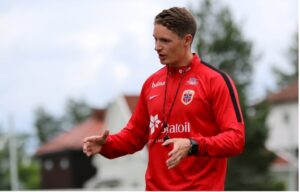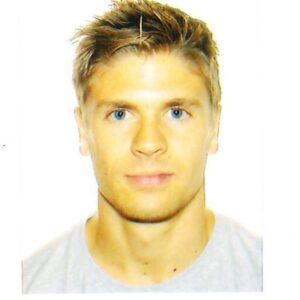The full paper can be found here.
Tell us more about yourself and the author team.
I am a sports physiologist and have a background as head of performance for professional football teams and as a fitness coach for Olympic-level alpine skiers and handball players. For the past five years, I have worked as a PhD-candidate at the Oslo Sports Trauma Research Centre (OSTRC) at the Norwegian School of Sport Sciences, and I will defend my PhD thesis on December 16th 2021.

Our team on this paper consist of my three PhD-supervisors and one MSc student in sports physiotherapy. Thor Einar Andersen, my main supervisor, is a professor at OSTRC. He is a consultant Sports Medicine Physician and a consultant in Physical Medicine and Rehabilitation. He is medical director at the Norwegian FA Medical Clinic and Chief Medical Officer in the Football Association of Norway.

Benjamin Clarsen is a sports physiotherapist and associate professor working at the Norwegian Institute of Public Health and the OSTRC. He has published extensive research on health problem surveillance and prevention in sports and has a background as a team physio for professional cycling teams.

John Bjørneboe is a physician with a PhD from OSTRC and is currently working at the Department of Physical Medicine and Rehabilitation at Oslo University Hospital.

Andreas Ranvik is a sports physiotherapist with long experience working within both youth and elite football and handball. He was instrumental in the data collection and contributed with analysis through his master thesis from this project.

What is the story behind your study?
It originated from discussions about the project plan of my PhD. The overarching objective of my PhD project was to expand the knowledge about the consequences of training load on health problems. Furthermore, to test the preventive effect of individual training planning and load management on the prevalence of health problems. We performed a cluster-randomised controlled trial to investigate this, including nearly 500 elite Norwegian youth footballers of both sexes. In addition, we aimed to investigate the player’s and coaches’ thoughts and attitudes towards health problems, training load management and intervention studies.
Previous studies have shown that athletes’ adherence to preventive measures is limited. Even a measure that can prevent health problems by 100% would have inadequate effect without being successfully implemented. Furthermore, to test the impact of a measure, a high degree of compliance is needed. Hence, comprehensive knowledge of the implementation of a preventive measure is critical. Previous studies looking into the implementation of preventive measures have found two successful facilitators; first that all key stakeholders should be involved when planning a measure. Second, the measure should be time-efficient. We investigated these two measures and whether implementing a load management intervention could prevent health problems in elite youth football.
Immediately after completing the intervention, not yet knowing the effectiveness of the RCT, we asked all participating players and coaches about their attitudes, beliefs and thoughts on health problems and training load.
In your own words, what did you find?
We believe that there is a symbiotic relationship between players and coaches in sports. That was our main finding regarding implementing preventive measures, too. One of the most important facilitators for players was that the coaches were positive, and vice versa; coaches were inspired by the players’ motivation. In line with previous studies, we also found that preventive measures needed to be time-efficient and that key stakeholders must be involved when planning the measures. Furthermore, players and coaches believed that footballers are at high risk of sustaining health problems, particularly overuse injuries. They thought that load management has the potential to reduce all types of health problems, including injuries and illnesses, in elite youth football.
What was the main challenge you faced in your study?
After ending a time-consuming RCT lasting 10-months, our biggest challenge was to convince players to participate in a survey about their thoughts, attitudes, and beliefs towards the intervention. Players, particularly coaches, appeared to have a high degree of study fatigue. We had to make a considerable effort to engage the intervention group coaches and players and motivate them to respond.
If there is one take-home message from your study, what would that be?
Involve all stakeholders when planning preventive measures and focus on time-efficient easy-to-use technical solutions for all participants. Focus on both performance and prevention when creating buy-in with stakeholders.